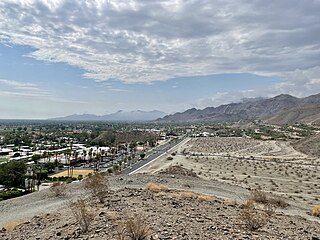
Rancho Mirage is a city in Riverside County, California, United States. The city is a low-density desert-resort community with resorts, golf courses, and country clubs within the Colorado Desert section of the Sonoran Desert. Nestled along the foothills of the Santa Rosa Mountains in the south, it is located several minutes east of Palm Springs. The city is adjacent to Cathedral City, Palm Desert, and unincorporated Thousand Palms. The population was 16,999 at the 2020 census, down from 17,218 at the 2010 census, though the seasonal population can exceed 20,000. Incorporated in 1973, Rancho Mirage is one of the nine cities of the Coachella Valley.
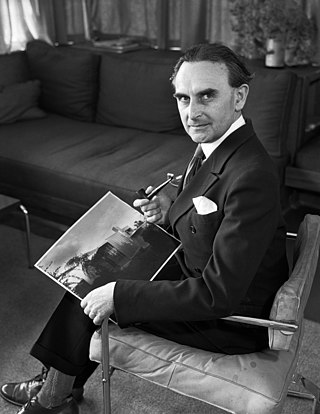
Richard Joseph Neutra was an Austrian-American architect. Living and building for most of his career in Southern California, he came to be considered a prominent and important modernist architect. His most notable works include the Kaufmann Desert House, in Palm Springs, California.
The Von Sternberg House was a house designed by the architect Richard Neutra. With only one bedroom, plus bedrooms for servants, it was built in 1935 at 10000 Tampa Avenue, Northridge, on a plot of 13 acres in California's then-rural San Fernando Valley for the movie director Josef von Sternberg. The house was demolished in 1972 and the land became a housing development. Much of the estate's land had been sold off decades earlier and its final size was four acres.

The Lovell House or Lovell Health House is an International style modernist residence designed and built by Richard Neutra between 1927 and 1929. The home, located at 4616 Dundee Drive in the Los Feliz neighborhood of Los Angeles, California, was built for the physician and naturopath Philip Lovell. It is considered a major monument in architectural history, and was a turning point in Neutra's career.
Albert Frey was a Swiss-born architect who established a style of modernist architecture centered on Palm Springs, California, United States, that came to be known as "desert modernism".
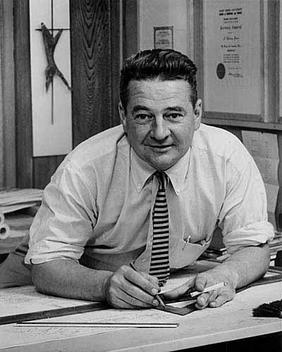
Archibald Quincy Jones was a Los Angeles–based architect and educator known for innovative buildings in the modernist style and for urban planning that pioneered the use of greenbelts and green design.
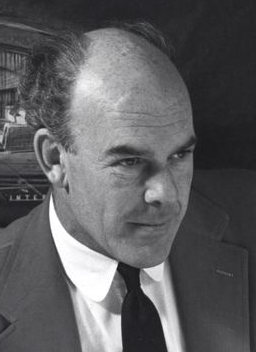
John Edward Lautner was an American architect. Following an apprenticeship in the mid-1930s with the Taliesin Fellowship led by Frank Lloyd Wright, Lautner opened his own practice in 1938, where he worked for the remainder of his career. Lautner practiced primarily in California, and the majority of his works were residential. Lautner is perhaps best remembered for his contribution to the development of the Googie style, as well as for several Atomic Age houses he designed in the late 1950s and early 1960s, which include the Leonard Malin House, Paul Sheats House, and Russ Garcia House.
Emerson Stewart Williams, FAIA was a prolific Palm Springs, California-based architect whose distinctive modernist buildings, in the Mid-century modern style, significantly shaped the Coachella Valley's architectural landscape and legacy.

Mid-century modern (MCM) is a movement in interior design, product design, graphic design, architecture and urban development that was present in all the world, but more popular in North America, Brazil and Europe from roughly 1945 to 1970 during the United States's post-World War II period.
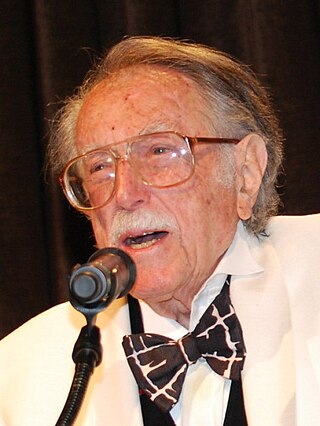
Julius Shulman was an American architectural photographer best known for his photograph "Case Study House #22, Los Angeles, 1960. Pierre Koenig, Architect." The house is also known as the Stahl House. Shulman's photography spread the aesthetic of California's Mid-century modern architecture around the world. Through his many books, exhibits and personal appearances his work ushered in a new appreciation for the movement beginning in the 1990s.

The Cyclorama Building at Gettysburg was a historic modernist concrete and glass Mission 66 building dedicated November 19, 1962 by the National Park Service (NPS) to serve as a Gettysburg Battlefield visitor center, to exhibit the 1883 Paul Philippoteaux Battle of Gettysburg cyclorama and other artifacts, and to provide an observation deck. The building was demolished in 2013.
John MacLane Johansen was an American architect and a member of the Harvard Five. Johansen took an active role in the modern movement.

The Kaufmann Desert House, or simply the Kaufmann House, is a house in Palm Springs, California, that was designed by architect Richard Neutra in 1946. It was commissioned by Edgar J. Kaufmann, Sr., a businessman who also commissioned Fallingwater by Frank Lloyd Wright.
The Cal Poly Pomona College of Environmental Design is a college part of the California State Polytechnic University, Pomona. The college houses over 1,600 students; making it one of largest environmental design programs in the United States. The college offers bachelor's degrees in five departments, as well as three master's degree programs. It is the only academic unit within the California State University system to be associated with a Pritzker Prize laureate.
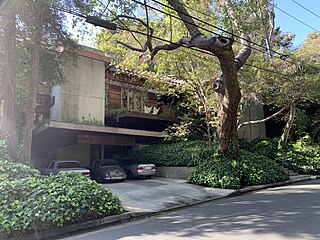
The Kappe Residence is a house in the Pacific Palisades section of Los Angeles, California, designed by architect Raymond Kappe, FAIA, as his own residence. It is a modern design built into a heavily treed hillside. It was designated a Los Angeles Historic-Cultural Monument in 1996, and in 2008 it was named one of the top ten houses in Los Angeles by an expert panel selected by the Los Angeles Times.

The Walter L. Dodge House in West Hollywood, California, was an architecturally significant home, designed by Irving Gill in the Early Modern style. Though the Dodge House received significant recognition from architectural experts, it was targeted for redevelopment. A long preservation effort to shield it from the wrecking ball ultimately failed, ending with complete demolition in 1970. The Dodge House was replaced by apartments.

Sunnylands is the former Annenberg Estate in Rancho Mirage, California. The 200-acre (0.81 km2) property is currently run by The Annenberg Foundation Trust at Sunnylands, a not-for-profit organization. The property was owned by Walter and Leonore Annenberg until 2009 and had been used as a winter retreat by the couple beginning in 1966, when the house was completed. The city of Rancho Mirage considers the property to be “rich with historical significance” and declared Sunnylands a historic site in 1990. Located at Frank Sinatra and Bob Hope Drives, the property has been the vacation site of numerous celebrities and public officials. Sunnylands is sometimes referred to as the "Camp David of the West."
Juergen Nogai is a German architecture, art and documentary photographer.
70588 Frank Sinatra Drive is a mid-century modern house in Rancho Mirage, California, that was the residence of the singer and actor Frank Sinatra from 1957 to 1995.
Marmol Radziner is a design-build practice based in Los Angeles that was founded in 1989 by American architects Leo Marmol and Ron Radziner. The firm specializes in residential, commercial, hospitality, cultural, and community projects, and offers various design services, including architectural design, construction, landscape design, interior design, furniture design, jewelry design, and modern architecture restoration.











